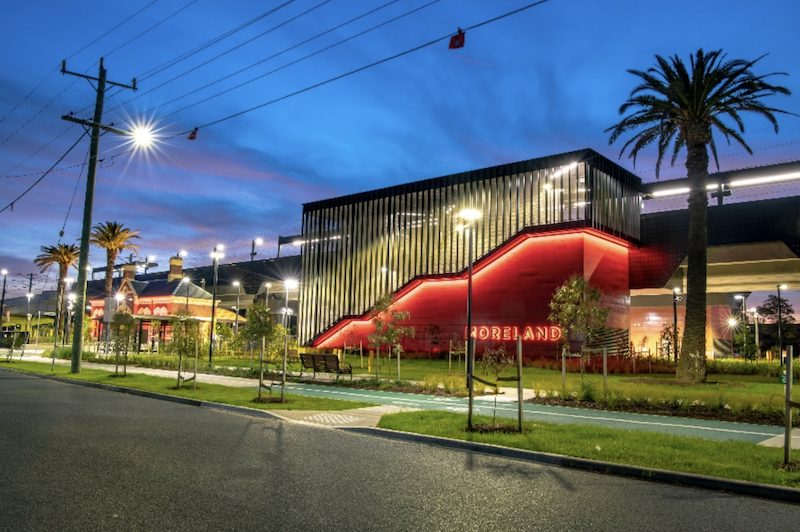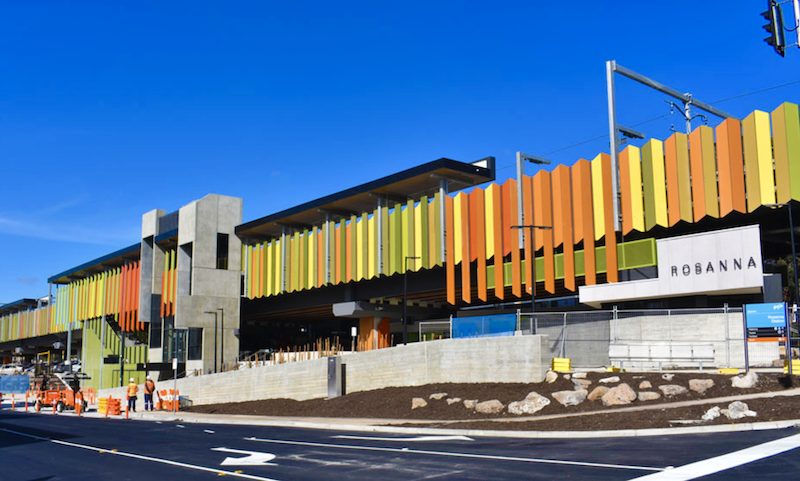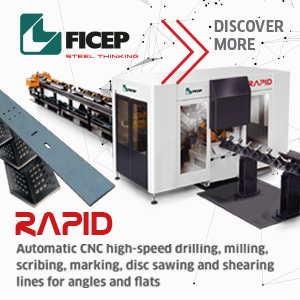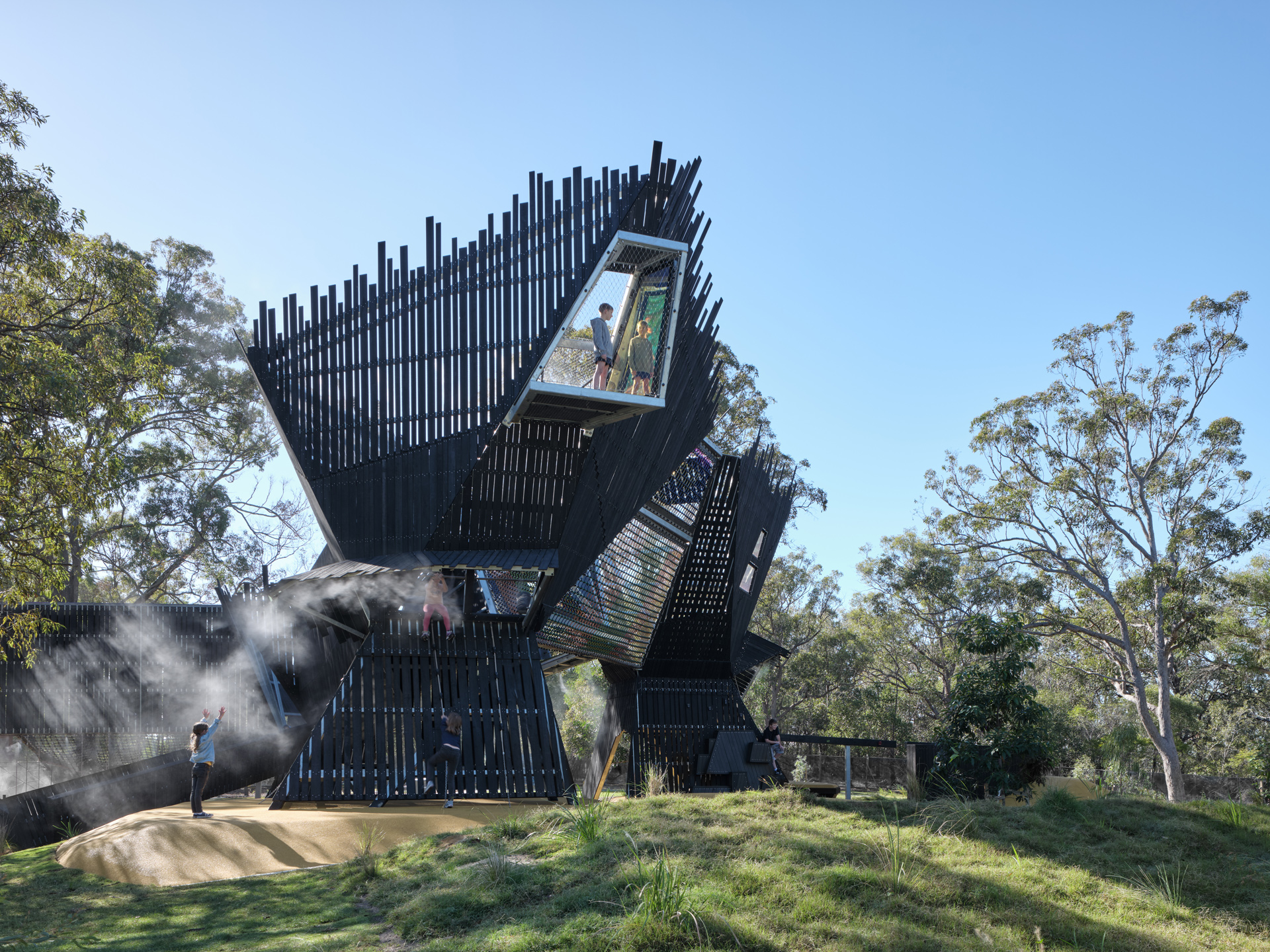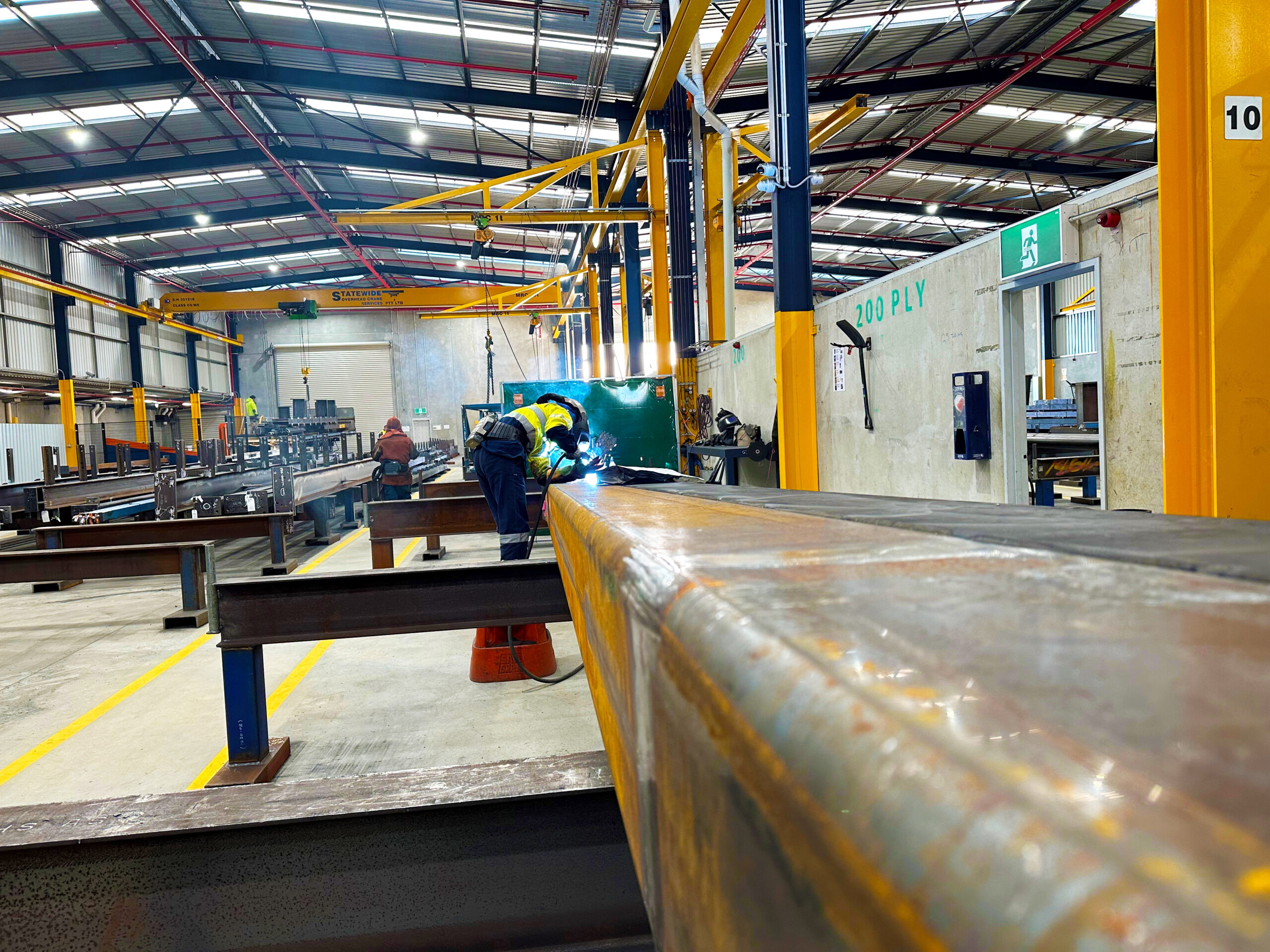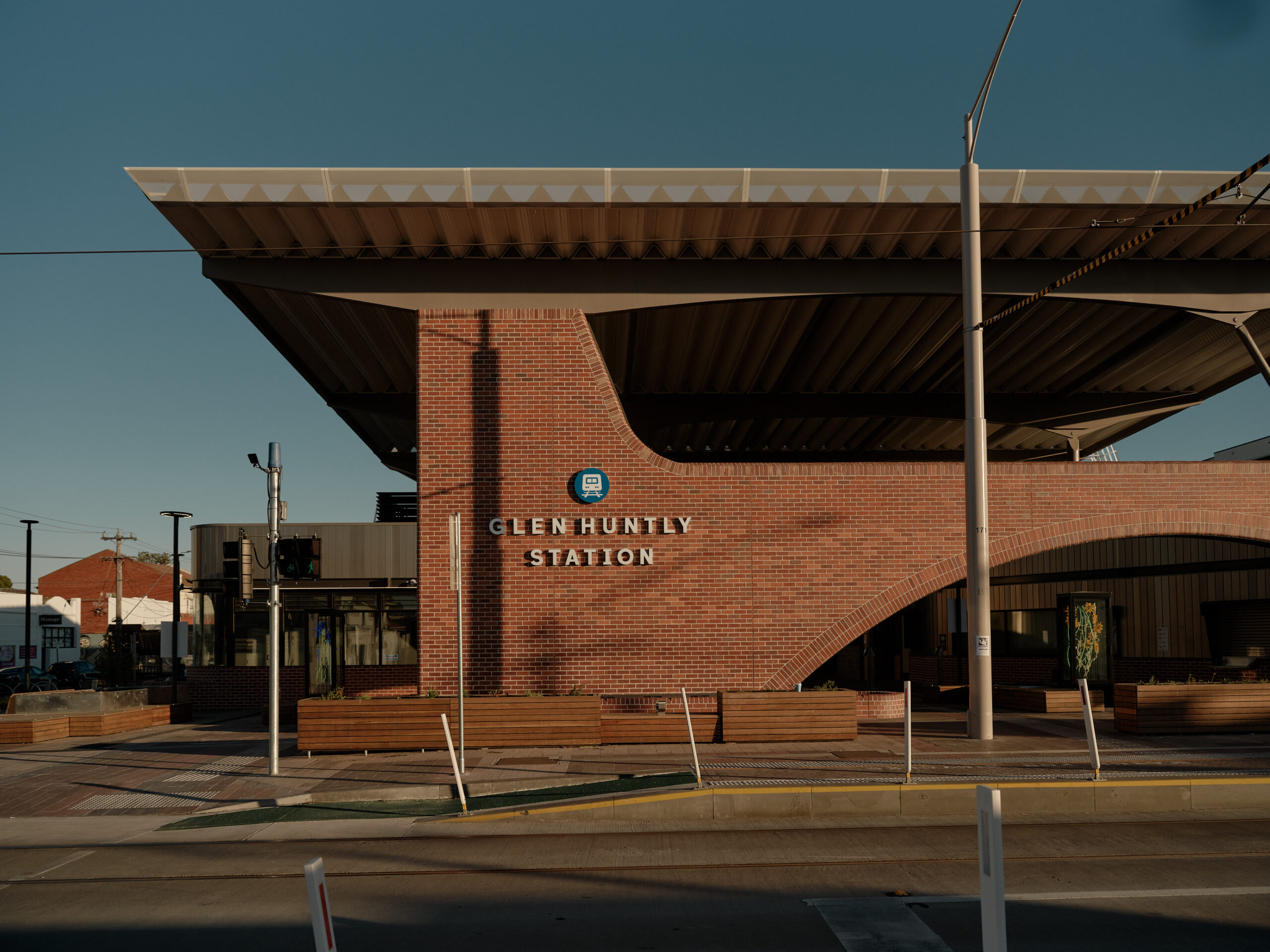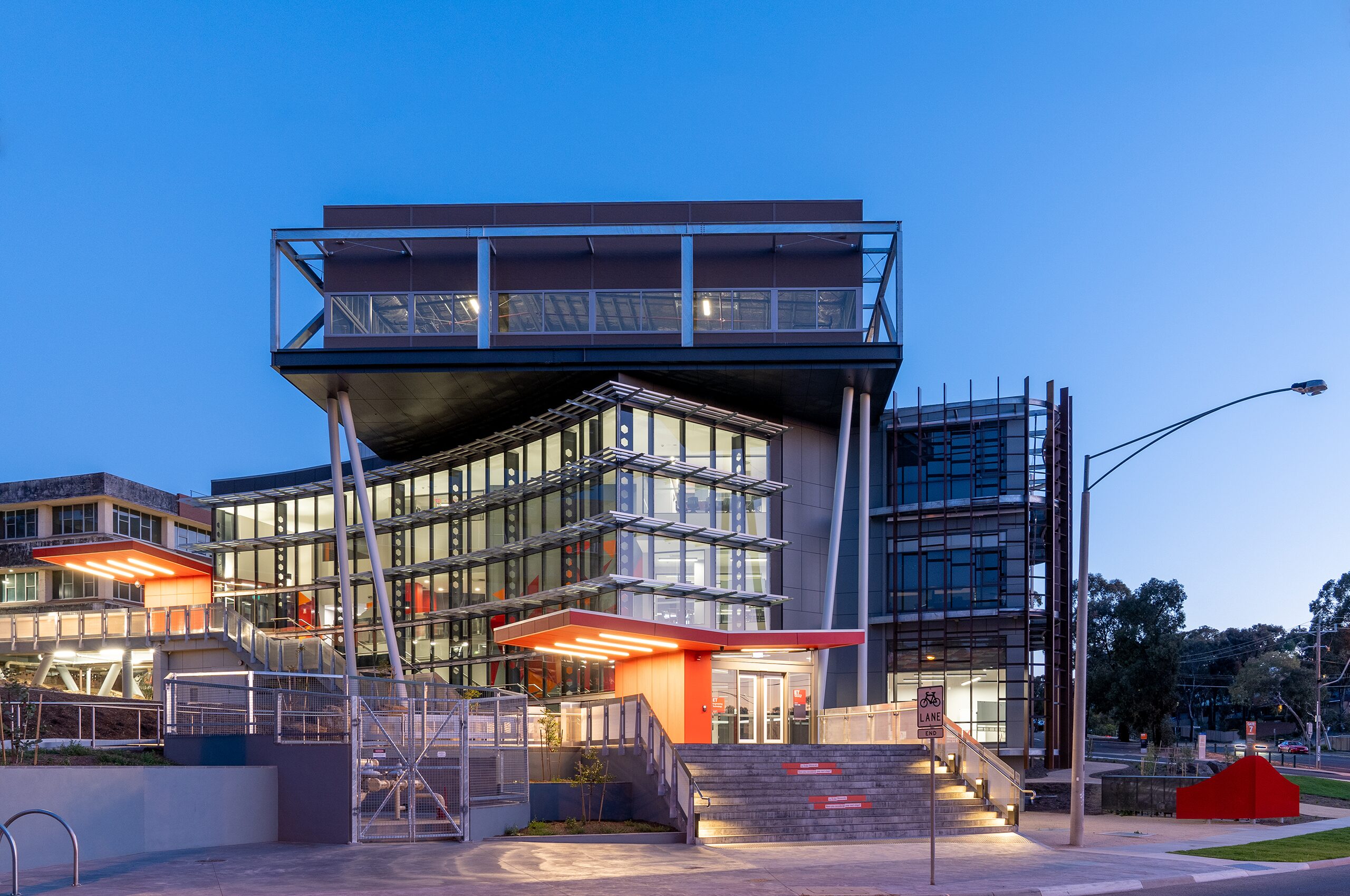Based in Melbourne, Sutcliffe Engineering is a leading provider of structural steel fabrication and erection services. With a specialised network of sub-contractors and suppliers, the company specialises in commercial and industrial works with substantial experience in complex engineering and architectural steel structures. Sutcliffe Engineering has a reputation for being customer focused, making the company the first-choice contractor for many tier one and tier two builders. This reputation has been forged over many years of building quality relationships, and delivering on time and on budget projects across Victoria. Sutcliffe Engineering regularly showcases its skills and experience in high-profile projects, playing a significant role in Victoria’s Level Crossing Removal Project, the Kilmany Bridge, and a pedestrian bridge connecting two Deakin University campuses.
Established in 2001, Sutcliffe Engineering started out fabricating feeders for the mining sector, pressure piping, heat exchangers and furnace lances for overseas steel smelters. Over the years, the company progressed onto large scale infrastructure projects like railway stations, overhead structures, bridges and gantries, supplying to tier one and two contractors.
Today, Sutcliffe Engineering is a leading provider of structural steel fabrication and erection services. With a specialised network of sub-contractors and suppliers, the company offers a complete package catered to customer requirements, from material procurement, shop drawings, and protective coating treatments, to onsite installation.
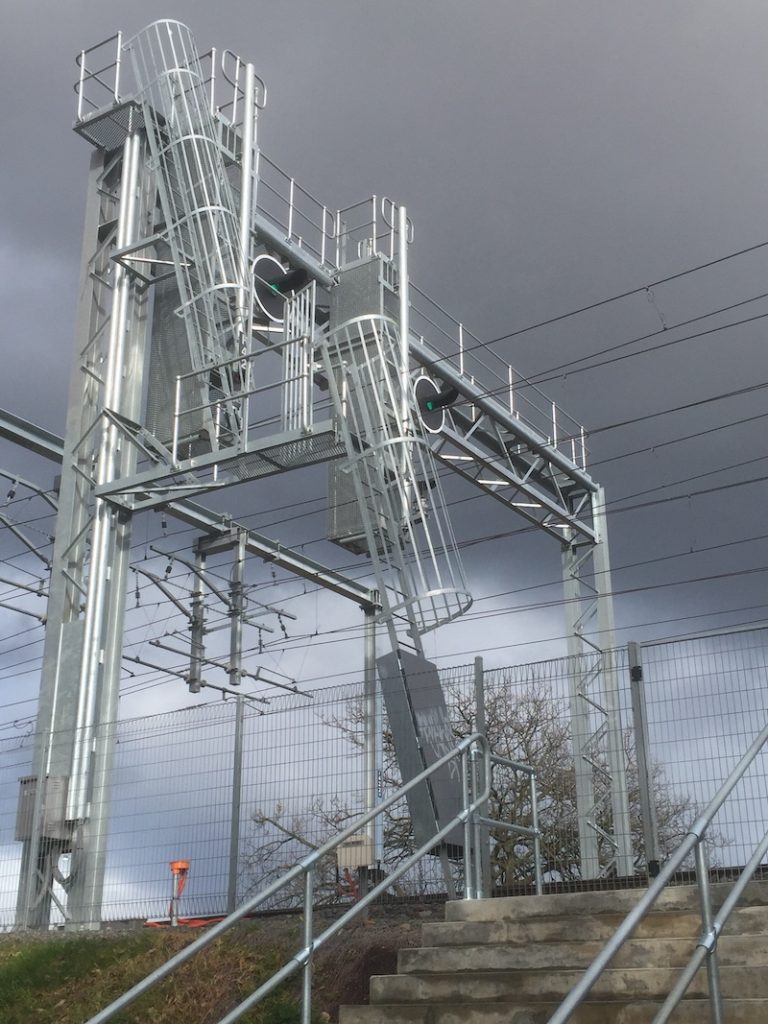
Exceptional steel services
Sutcliffe’s 2,300m2 facility comprises two undercover bays each with a lifting capacity of 36 tonnes. The facility is fully equipped for all major steel fabrication operations, including cutting, rolling, drilling, welding, lifting, and machining equipment. The team has extensive experience across all welding processes, using all types of materials such as copper to steel, and high nickel alloys.
According to Nick Palamaras, director of Sutcliffe Engineering, “We have extensive experience in welding exotic materials such as copper to steel, including superalloys, high nickel alloys like Inconel and Incalloy, low ferrite stainless steel, Invar and Hastalloy—all to a wide variety of Australian and international standards. These cover normal structural steel fabrications, through to complex pressure vessels.”
“An integral part of our delivery and quality outcomes is the excellent relationships we’ve developed with key suppliers. These include suppliers of raw materials, metal finishers, material processors, weld inspectors and transporters.”
Key to the Sutcliffe’s success is their simple philosophy of employing the best people available right across the organisation, to always ensure a high-quality outcome. “Managers, supervisors, and trades staff are backed by years of industry experience, offering their specialist fabrication knowledge to clients during the design phase of the project to provide more capable and cost-effective solutions,” Nick said.
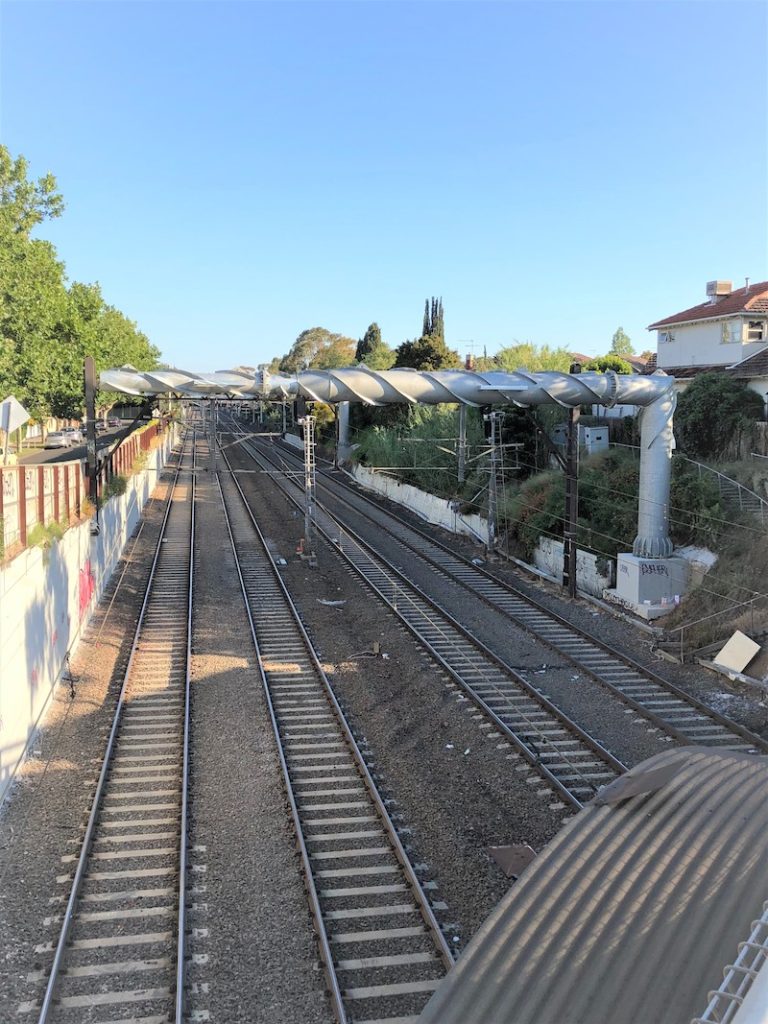
A focus on quality
Quality control and assurance are firmly embedded in Sutcliffe’s company culture.“The manufacturing procedures we use are time proven and closely monitored during all phases of manufacture, and are chosen as fit for purpose for the complexity of task involved. For each weld, we develop a full weld procedure according to the type of material, weld, and consumables, which is NATA approved for compliance to applicable standards and client specifications,” Nick said.
Sutcliffe Engineering has a robust quality management system based on ISO 9001 requirements, and they are certified to AS/NZS 5131 Structural Steelwork – Fabrication and erection – Category CC3, and comply with AS/NZS ISO 3834.2 Quality requirements for fusion welding of metallic materials.
“We maintain detailed quality records that demonstrate conformance and traceability to its origin. Quality, inspection and test plans are established and verify that all aspects of specification criteria are met. For further quality assurance, our clients also receive substantial documentation in the form of a manufacturers data report, verifying that all aspects of their specification are met,” Nick said.
“We are also dedicated to protecting and enhancing our environment in all works performed. Sutcliffe Engineering is recognised by the ASI as an environmentally sustainable facility, certified under the Environmental Sustainability Charter.”
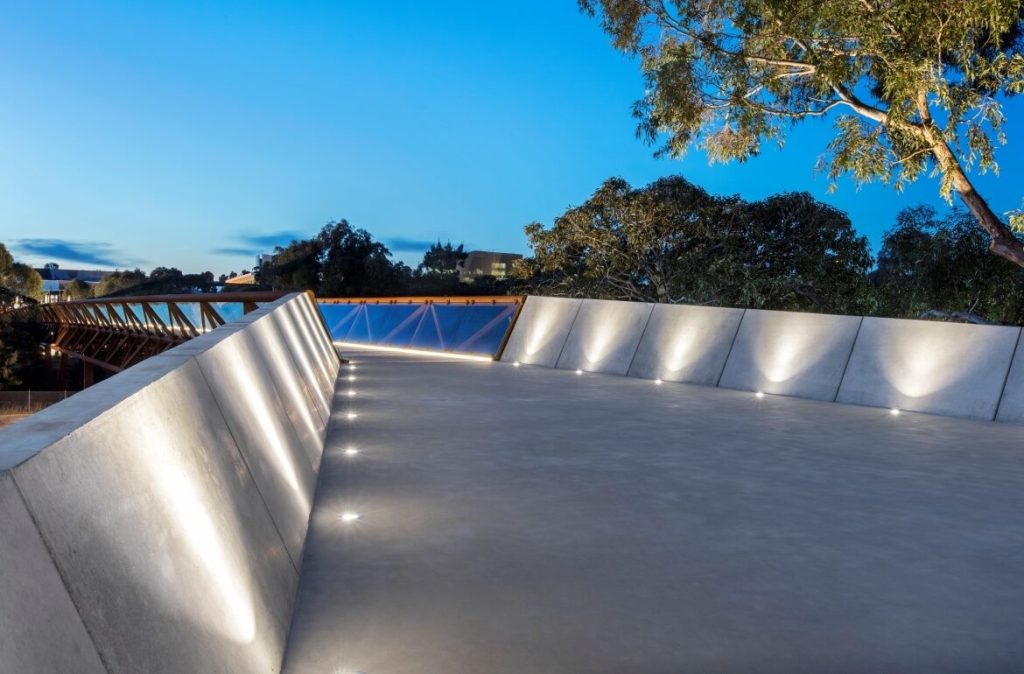
Connecting Deakin University
Sutcliffe Engineering was engaged in the building of a new pedestrian bridge at Deakin University, running over a creek to connect two campuses in Melbourne’s eastern suburbs. This three-dimensional modular bridge uses BlueScope REDCOR® weathering steel to deliver a practical, paint-free structure that requires minimal maintenance compared with conventional structural steel.
The site posed several key challenges, the primary one being access. The small existing bridge across the creek had stairs, making it inaccessible to people using wheelchairs and prams, or those with other mobility issues. Any new bridge had to comply with the requirements of the Disability Discrimination Act and provide safe and easy passage for people of all abilities.
Additionally, because the creek corridor is titled Crown Land, the flyover section had to be low maintenance and allow for quick and easy cleaning and repairs, to avoid protracted and costly access permits. The bridge also had to blend in with its native bush surrounding – an especially important consideration as a previous proposal had been scrapped following community opposition to the design. The complexity of the project was compounded by the fact that access to the walking paths and existing crossing had to be maintained throughout construction, allowing around 43,000 pedestrians to move through each week.
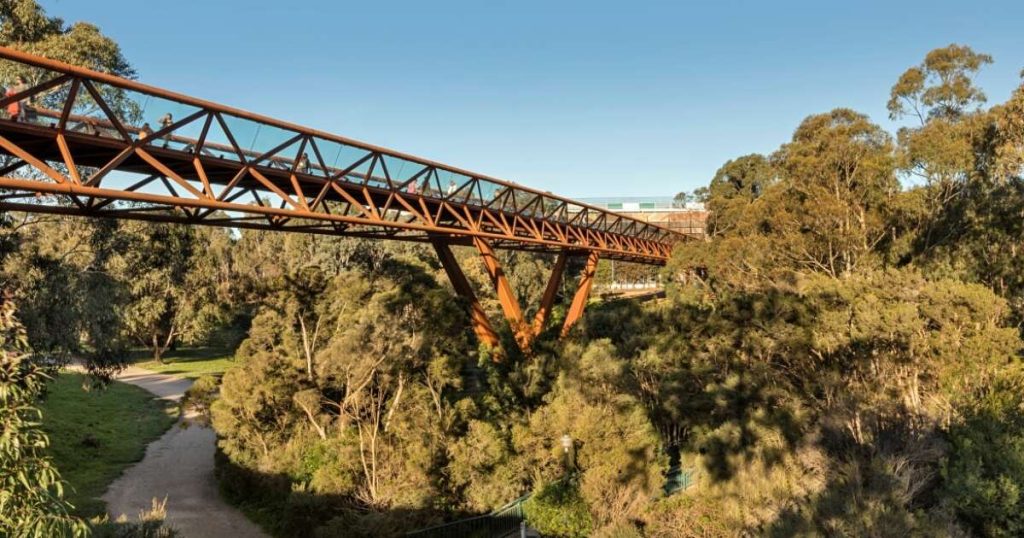
The new 250m long, aerial bridge was built using 200 tonnes of REDCOR® weathering steel, which requires low maintenance and has an appearance that was acceptable to the community. The innovative structural system includes an 85m long central section that touches the ground at just one point, minimising the bridge’s impact on the creek corridor both during construction and throughout its 100-plus year lifespan.
The bridge comprises a series of modular bays, each about 4m2, connecting to form a series of six trusses. The walkway deck consists of concrete panels cast in permanent formwork trays made from REDCOR® weathering steel, giving the underside of the bridge the same appearance as the rest of the structure. The steel was fabricated off-site by Sutcliffe Engineering, working with the architect’s 3D model as a reference to ensure geometric accuracy and coordination with other elements. The exacting steel detailing and precise prefabrication facilitated a smooth construction program on-site. Erection had to be precise, with a tolerance of just 1mm from pin to pin, between the tie member plates.
“We undertook a lot of preliminary work to survey and check the dimensions,” Nick said. “We couldn’t trial-assemble it, but we did everything in our power to make sure that when the long truss sections arrived at the site, they were near perfect and would fit. We had contracted an independent surveyor to visit the factory and site beforehand, to double-check the survey against the PlanIT Designs model. I knew it was all going to go together beautifully, and when we set it over the bearings, it fitted exactly into place.”
The bridge, named Morgan’s Walk, was officially opened in 2017. As a result of its fully integrated and symmetrical structure, it appears to extend effortlessly across the creek corridor. The Deakin University community and local residents finally have a bridge that is accessible to everyone. And, according to local reports, the community is pleased with the elegant, efficient design of a weathering steel structure that boasts the unusual ability to both blend in and stand out.
It’s little wonder that the project won the ASI’s 2018 Victorian Steel Excellence Award in the Engineering Projects category.
Level Crossing Removal Project
The Victorian State Government has invested $15 billion in removing 110 dangerous and congested level crossings across Melbourne by 2030 – the largest project of its kind in Victoria’s history. In addition, 51 train stations are being rebuilt, to transform the way people, live, work, and travel, paving the way for more services when the Metro Tunnel opens.
To date, Sutcliffe Engineering has been engaged in the successful rebuild of the Hallam, Preston, Moreland, Reservoir, Rosanna, Blackburn, and McKinnon railway stations. The revamped stations offer improved accessibility, with lifts and stairs to take passengers from the forecourt to the train platforms.
Better facilities make the stations safer and more comfortable for passengers, with upgraded, covered waiting rooms, elevating platforms with seating to protection from Melbourne weather, and more spaces to securely lock bikes. They are also designed for water and energy efficiency, including sustainable features such as environmentally friendly materials, solar panels, rainwater use, and LED lighting. New open areas around the stations create inviting spaces for the community to enjoy, with improved walking and cycling paths providing more ways for locals and visitors to get to the station.
